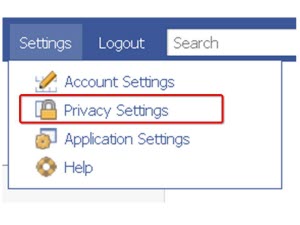 This guest blog post is a part of our cyberSAFE blog series focusing on back-to-school security, privacy and identity topics. It comes from Anne Livingston, the founder of Kids Privacy, which provides parents with information and resources to teach kids to share smart and stay safe online. This fall, she is publishing her first book – Talking Digital: Tips and Scripts for Parents Raising Kids in a Digital World.
This guest blog post is a part of our cyberSAFE blog series focusing on back-to-school security, privacy and identity topics. It comes from Anne Livingston, the founder of Kids Privacy, which provides parents with information and resources to teach kids to share smart and stay safe online. This fall, she is publishing her first book – Talking Digital: Tips and Scripts for Parents Raising Kids in a Digital World.
When I download a new app, I like to figure it all out first. I take my time, look through settings, and read reviews. My kids have a different approach. They just dive in. Often, this means moving as rapidly as they can, ignoring the settings to get to the fun part. But taking time to explore the settings is a critical piece to protecting privacy.
In the past, teens were able to rely on privacy through obscurity. With so much information online, most communications were lost in a sea of content. Technology is developing faster and better ways to search. Now, people can look for things online via an image or location. These public photos and posts are becoming easier to find. This visibility can lead to unintended audiences
Parents should talk with their kids and teens about the importance of limiting information. Most teens are looking to hang out online with their friends and classmates. By utilizing privacy settings, they can make sure they are sharing with their friends and not the entire world. Fortunately, most apps have some privacy protections. Below is a quick overview of the privacy options for some of the most popular apps for teens.
Twitter, Vine & Instagram allow users to set up private accounts. With a private or protected account, only subscribers approved by your teen can see their posts and pictures. Teens should remember that even with a private account, their profile photo and profile information is still public.
Tumblr also has private accounts but users must first set up one public profile. After that, they can create as many private accounts as they wish.
Facebook does not have private accounts but allows users to select a different audience for each post. Users can choose to share a picture or post with the appropriate audience for that content. Teens should remember the default audience is the same as the audience they selected on their previous post.
YouTube is a popular video-sharing site where teens can create a channel and post videos. YouTube does not have private channels anymore. By default, all videos are public. Teens can change an individual video’s setting to be private or unlisted, and private videos can only be viewed by selected users, while unlisted videos can only be seen by people who have the video link.
Snapchat doesn’t have privacy settings but attempts to protect privacy by allowing teens to share a photo that disappears after a set amount of time. The recipient can only see the photo for a limited time before it vanishes. Snapchat also notifies the user if the recipient takes a screenshot, but teens should note that the screenshot can be easily shared with the public.
Even when kids set everything up correctly, information can still leak out. A picture shared between friends on Snapchat can be screenshotted and posted on to Twitter or Instagram. The bottom line is that kids never know who is going to see it. Even with privacy settings, they need to be smart about what they share. If they would not wear it on a t-shirt, they should not post it. This goes for sharing pictures of their friends as well. Protecting privacy requires all of us to be good friends both online and offline.
For more information about privacy settings, check out KidsPrivacy’s detailed reviews of popular apps and social networks.


